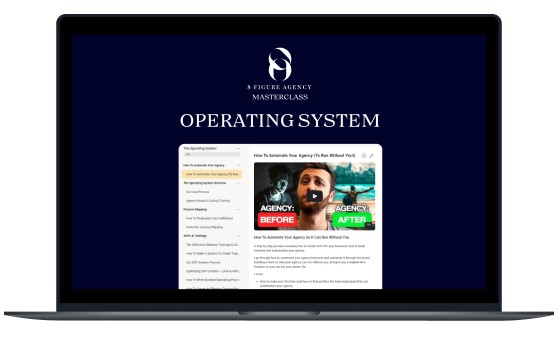Organizational culture is the collection of values, beliefs, attitudes, and behaviors that mold an organization. It encompasses the shared values, beliefs, and practices that affect how people behave within the system. Think of it as the organization’s personality as it represents the company even by sheer observation.
What Is Organizational Culture and Why Is It Important?
The term “organizational culture” refers to the common values, traditions, customs, practices, and social behavior of a company. It establishes the social norms and standards of conduct within the organization and shapes how employees interact with one another, customers, and their surroundings. This encompasses the shared attitudes, beliefs, and procedures that shape employee behavior and impact how people tend to carry out their duties.
The significance of organizational culture lies in its ability to influence the conduct of employees in a company. It creates a feeling of identity and inclusion among the workers while also determining a shared goal and path for the organization. Additionally, it draws employees who share the same principles and convictions as the system and contributes to improving employee morale and work output, resulting in greater customer satisfaction.
The Role of Values and Heuristics in Shaping Organizational Culture
Values refer to the principles or standards that a company upholds and follows, which guide the employees’ behavior and decision-making processes. These can be either explicit (as in mission statements or codes of conduct) or implicit (as in shared beliefs and assumptions).
Heuristics are shortcuts that help people simplify complex problems and make quick decisions. They are rules of thumb that rely on limited information and are often based on past experiences. Social and cultural factors can also influence heuristics.
Organizational culture story values heuristics as it is shaped by both values and heuristics. Values provide a framework for decision-making and behavior within an organization, while heuristics help to simplify complex problems and make decisions quickly. Together, they help to shape the behavior of the employees within an organization and influence the way they do their work as that is how the human brain works.
Theoretical Foundations of Organizational Culture

Organizational culture is a complex phenomenon that has been studied extensively by researchers and scholars. Several theoretical frameworks have been proposed to explain the nature and dynamics of organizational culture. In this discussion, we will explore some of the most widely accepted theoretical foundations of organizational culture.
Edgar Schein’s Three Levels of Organizational Culture
Edgar Schein is one of the most influential scholars in the field of organizational culture. He proposed a model that identifies three levels of organizational culture: artifacts, values, and assumptions. Artifacts are the visible, tangible elements of a system, such as its architecture, dress code, and symbols. Values are the beliefs and attitudes that underlie an organization’s behavior, while assumptions are the unconscious beliefs and values that are taken for granted.
Schein argues that organizational psychology and culture are embedded at all three levels and that changing the perspective of an organization requires addressing all three levels. He also emphasizes the importance of understanding the underlying assumptions of an organization’s culture, which are often difficult to identify and change.
The Competing Values Framework and The OCAI Model by Kim Cameron and Robert Quinn
Kim Cameron and Robert Quinn developed the Competing Values Framework and OCAI Model, which identifies four key dimensions of organizational politics in case studies:
- Clan cultures are characterized by a family-like atmosphere and a focus on employee development and teamwork.
- Adhocracy cultures are innovative and entrepreneurial, with a focus on risk-taking and creativity.
- Market cultures are results-oriented and competitive
- Hierarchy cultures are characterized by control and stability.
The Competing Values Framework and OCAI Model are often used to help organizations identify their dominant emotions and make strategic decisions about how to improve their culture. It also emphasizes the importance of balancing competing values and recognizing the strengths and weaknesses of different types of cultures.
Hofstede’s Cultural Dimensions Theory
Geert Hofstede’s Cultural Dimensions Theory is a widely accepted framework for understanding the differences between cultures. The theory identifies six key dimensions of the cultural world:
- Power Distance refers to the extent to which people accept unequal distribution of power.
- Individualism vs. Collectivism refers to the extent to which people value individual achievement vs. group harmony.
- Masculinity vs. Femininity refers to the extent to which people value competitiveness vs. cooperation.
- Uncertainty Avoidance refers to the extent to which people are comfortable with ambiguity and uncertainty.
- Long-Term Orientation refers to the extent to which people value long-term planning and investment.
- Indulgence vs. Restraint refers to the extent to which people are focused on immediate gratification vs. self-discipline.
Hofstede’s Cultural Dimensions Theory is often used to help organizations understand the cultural differences between countries and regions and make strategic decisions about how to operate in different cultural contexts.
Understanding Values and Their Role in Organizational Culture
Understanding values and their role in organizational culture is crucial for creating positive and productive workplace psychology.
There are several types of values:
- Ethical values refer to the principles of right and wrong that guide our behavior.
- Social values are the beliefs and principles that shape our behavior in society, such as respect for others and responsibility.
- Personal values are the beliefs and principles that are unique to an individual and shape their behavior and decision-making.
The Importance of Values in Organizational Culture
Values are an essential component of organizational culture as they shape the behavior and decision-making of employees and leaders. When employees and leaders share the same values, it creates a sense of unity and purpose within the system. This, in turn, leads to a positive and productive workplace psychology where employees feel valued and motivated to work towards a common goal.
How Values Influence Behavior and Decision-Making in Organizations
Values influence behavior and decision-making in organizations by providing a framework for employees and leaders to make choices. When employees and leaders share the same values, it creates a sense of consistency in decision-making and behavior. This consistency helps to build trust and credibility with stakeholders, including customers, shareholders, and employees. In contrast, when employees and leaders do not share the same values, it can lead to consequences of confusion, mistrust, and conflict.
Examples of Values-Based Cultures in Organizations
Several organizations have successfully created values-based cultures that have positively impacted their performance and success.
For example, Audi, an automobile company, offers leases with monthly payments that will usually cost less compared to financing the same vehicle. If your vehicle is involved in an accident you are protected if you lease, the leasing company carries that burden. At the end of the lease cycle, you simply turn the vehicle in.
Another example is Zappos, an online shoe and clothing retailer, which has much history and a strong commitment to delivering exceptional customer service. This value is reflected in the company’s cultural reality, where employees are empowered to go above and beyond to meet customer needs. Zappos’ values-based cultural belief has contributed to its success and growth as a company.
Heuristics and Their Role in Organizational Culture

Heuristics are mental shortcuts or rules of thumb that people use to simplify complex human decision-making processes.
There are several types of heuristics:
- Availability heuristics refer to the tendency to rely on information that is easily available when making decisions.
- Representativeness heuristics refer to the tendency to make judgments based on stereotypes or prototypes.
- Anchoring and adjustment heuristics refer to the tendency to rely too heavily on the first piece of information encountered when making a decision.
The Importance of Heuristics in Organizational Culture
Heuristics are an important component of humans’ organizational culture as they shape the behavior and decision-making of employees and leaders. The knowledge of heuristics can help organizations to make decisions quickly and efficiently. Understanding heuristics and their role in organizational history is crucial for creating a positive and productive workplace attitude, as well as their ability to solve problems.
How Heuristics Influence Behavior and Decision-Making in Organizations
Heuristics influence behavior and decision-making in humans and organizations by providing a framework for individuals to make decisions quickly and efficiently. However, heuristics can also lead to biases and errors in judgment, which can negatively impact organizational performance and human interest to solve problems.
Examples of Heuristics-Based Cultures in Organizations
Several organizations have successfully created heuristics-based cultures that have positively impacted their performance and success. For example, Amazon specifically has a strong concept of experimentation, which is based on the heuristics of trial and error. Amazon encourages its employees to experiment and try new things, even if they may fail. This heuristics-based culture has contributed to Amazon’s success as a worldwide company.
Another example is Pixar, an animation studio, which has a strong culture of dealing with collaboration and feedback. This heuristics-based culture is based on the idea of the availability heuristic, where individuals rely on readily available information. Pixar’s employees recognize that they are both free and encouraged to collaborate and provide feedback on each other’s work, which has contributed to the company’s success in creating award-winning films.
The Interplay Between Values and Heuristics in Shaping Organizational Culture
How Values and Heuristics Complement Each Other in Shaping Organizational Culture
When values and heuristics align, they can help organizations achieve their goals and build a strong culture that supports their mission and vision. For example, organizations that value teamwork may encourage heuristics that promote collaboration and cooperation, such as seeking out diverse opinions and perspectives when making decisions. This heuristics-based approach aligns with the company’s core values of teamwork and collaboration and can convince employees to make decisions that support these values.
How Conflicting Values and Heuristics Can Create Cultural Tensions
On the other hand, when values and heuristics conflict, it can create cultural tensions, stress and negatively impact organizational performance. For example, companies that value research and innovation but have a risk-averse culture may create tension among one group of employees who want to experiment and try new things and those who prefer to follow established procedures. These suggest that conflict can create cultural tensions that can hinder the organization’s ability to innovate and grow.
The availability heuristic can lead individuals to rely too heavily on easily available information, rather than seeking out additional information that may be more accurate or reliable. This can lead to poor decision-making and negative outcomes for the organization.
How to Align Values and Heuristics to Build a Strong Organizational Culture
To build a strong organizational culture, it is important to align values and heuristics. This can be done by making a point of creating a shared understanding of the company’s core values and heuristics and encouraging employees to use heuristics that align with these values.
For example, companies that value teamwork may encourage employees to use their knowledge and heuristics that promote collaboration and cooperation, such as seeking out diverse opinions and perspectives when making decisions. This heuristics-based approach aligns with the company’s core values of teamwork and collaboration.
Additionally, companies can align values and heuristics by providing training and development opportunities for employees that reinforce the company’s core values and heuristics. This can help employees understand how to apply heuristics that align with the company’s values, and ultimately lead to a stronger organizational culture.
Assessing Organizational Culture
Assessing organizational culture is important because it provides valuable insights into the values, beliefs, and behaviors that shape an organization’s identity and performance. By understanding the culture of an organization, leaders can make informed decisions about strategy, leadership, and employee engagement that can improve the task of the organization’s effectiveness and long-term success.
Different Approaches to Assessing Organizational Culture
- Surveys and questionnaires: This approach involves gathering data from employees bout their perceptions of the organizational culture. Surveys can be tailored to specific aspects of culture, such as values, communication, or leadership, and can provide quantitative data that can be analyzed for trends and patterns.
- Interviews and focus groups: This approach involves conducting one-on-one interviews or group discussions with employees to gather qualitative data about their perceptions of the organizational culture. Interviews and focus groups can provide in-depth insights into the nuances of culture and can uncover issues that may not be captured through surveys.
- Observations: This approach involves observing the behavior and interactions of employees in the workplace to gain insights into the organizational culture. Observations can point out valuable insights into how culture is enacted in practice and can uncover discrepancies between stated values and actual behaviors.
Best Practices for Assessing Organizational Culture
- Defining the purpose and scope of the assessment: Before beginning an assessment, it is important to define the purpose and scope of the assessment, including what aspects of culture will be assessed and how the data will be used.
- Engaging employees in the assessment process: To ensure the accuracy and relevance of the assessment, it is important to engage employees in the assessment process and to communicate the purpose and goals of the assessments that matter.
- Using a variety of assessment methods: To gain a comprehensive understanding of organizational culture, it is recommended to use a variety of assessment methods, including surveys, interviews, and observations.
- Analyzing and interpreting the data: Once the data has been collected, it is important to analyze and interpret the data to identify trends and patterns that can inform decision-making.
- Communicating the results and taking action: Finally, it is important to communicate the results of the assessment to stakeholders and to take action to address any issues or opportunities that have been identified. This may involve developing action plans, providing training and development opportunities, or making changes to policies and procedures.
Strategies for Building a Strong Organizational Culture
Building a strong organizational culture is essential for creating a positive work environment that drives employee engagement, performance, and retention.
Understanding the Importance of Leadership in Building Organizational Culture
Leadership is crucial in shaping organizational culture. Leaders need to be role models and ambassadors of the core values and heuristics that they want to instill in their organization. Leaders should also create a culture of open communication and collaboration to encourage employee engagement and feedback.
Identifying and Articulating Core Values and Heuristics
Core values and heuristics should be clearly defined and communicated throughout the organization. This involves identifying the values and heuristics that are most important to the organization and articulating them in a way that is easily understood by employees.
Incorporating Values and Heuristics into Organizational Practices and Policies
Once the core values and heuristics have been identified, they should be incorporated into all aspects of the organization, including recruitment, training, performance management, and decision-making processes. This helps to create a consistent culture throughout the organization.
Encouraging Employee Engagement and Feedback
Employees should be encouraged to participate in the development and implementation of the organizational culture. This can be done through regular communication, feedback mechanisms, and employee engagement initiatives.
Celebrating Successes and Recognizing Employees
Celebrating successes and recognizing employees who embody the core values and heuristics is a powerful way to reinforce the desired culture. This can include public recognition, rewards and incentives, and opportunities for professional development.
Challenges in Building and Sustaining a Strong Organizational Culture
Building and sustaining a strong organizational culture can be challenging, as it involves aligning values, heuristics, and behaviors across an organization.
Common Challenges and Strategies for Overcoming Them
Lack of Clarity Around Core Values and Heuristics
Without a clear understanding of the core values and heuristics that underpin the organizational culture, it can be difficult or impossible to create a consistent culture across the organization. To overcome this challenge, leaders should invest time in defining and articulating the organization’s values and heuristics and communicating them effectively to employees.
Resistance to Change
Change is often met with resistance, and building a strong organizational culture requires a willingness to change old habits and behaviors. Leaders should engage employees in the change process and communicate the benefits of the new culture, to build buy-in and overcome resistance.
Inconsistent Application of Values and Heuristics
If values and heuristics are not consistently applied throughout the organization, it can lead to confusion and undermine the desired culture. To address this challenge, leaders should ensure that values and heuristics are embedded in all aspects of the organization, including policies, procedures, and decision-making processes.
Turnover and Recruitment
Turnover can disrupt the organizational culture, and recruitment of new employees who do not align with the organization or system’s values and heuristics can also pose a challenge. To overcome this, leaders should prioritize the recruitment of employees who align with the organization’s culture and invest in onboarding and training programs to ensure that new employees understand and embrace the organizational culture.
Lack of Measurement and Feedback
Without regular measurement and feedback, it can be difficult to assess the effectiveness of the organizational culture and identify areas for improvement. Leaders should invest in tools and processes for measuring the organizational culture, such as employee surveys and performance metrics, and use this feedback to make continuous improvements.
The Importance of Values and Heuristics in Building a Strong Organizational Culture
Values and heuristics play a crucial role in building a strong organizational culture. Values provide a shared sense of purpose and guide behavior, while heuristics offer shortcuts for decision-making and problem-solving. When values and heuristics are aligned, they can reinforce and support each other, creating a cohesive and effective organizational culture.
Assessing and measuring the organizational culture is important for identifying areas of strength and improvement. Building and sustaining a strong organizational culture requires leadership commitment, clear communication, and consistent application of values and heuristics across the organization. By prioritizing the development of a strong organizational culture, organizations can improve employee engagement, performance, and overall success.
If you need help understanding, organizing and implementing these strategies, we are here to help!






